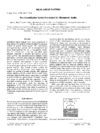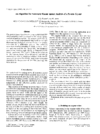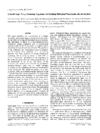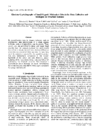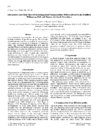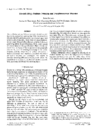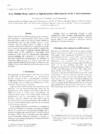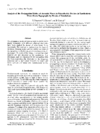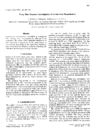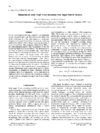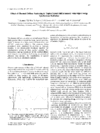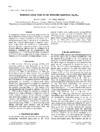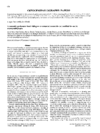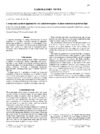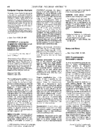issue contents
August 1998 issue

Cover illustration: Powder diffraction pattern of LaB6 obtained using a 200 x 400 mm flat imaging plate mounted at an angle of 45 degrees with the incoming X-ray beam. Experimental conditions: lambda = 0.8884 angstroms, D0 = 104 mm, exposure time 60 s. Courtesy of Poul Norby.
research papers
Custom instrumental systems utilizing two methods, vapour diffusion and temperature, have been developed for use in crystallizing proteins. These systems offer dynamic control of the crystallization process, resulting in dramatically improved crystallization results over results obtained with traditional methods.
This paper presents the program MOSAICITY, dedicated to the analysis of rocking curves and the evaluation of mosaic spread. The program includes a peak search, the integration of reflections and the refinement of some parameters involved in a new analytical model of the oscillation range versus the beam and crystal characteristics.
The design features of a laboratory-based small-angle X-ray scattering system for studying biological macromolecules in solution are described.
For ab initio electron crystallographic structure analyses of small organics, special care must be taken in sample crystallization in order to record useful selected-area diffraction intensities. However, if the reciprocal lattice is incompletely sampled, con- strained energy minimization may be superior to direct methods for structure determination.
The root-mean-square-strains were interpreted by the presence of dislocations in nanocrystalline Ni taking into account aniso- tropic dislocation contrast. Due to proper deconvolution of strain broadening, grain and coherent domain sizes were obtained in agreement with TEM.
Diffuse X-ray scattering observed for this porous SiO2 polymorph is explained by a model based on submicroscopic twinning. For its analysis a simple recursive method is developed.
This paper presents an analysis of the information obtainable by an X-ray multiple-beam diffractometry technique applied to the evaluation of III–V heterostructures.
Ultra-acoustic waves in piezoelectric devices have been studied by means of white beam X-ray topography. Simulations allow the confirmation of a theoretical model.
The performance of CCD area detectors in charge-density analysis has been tested. The positive and encouraging results allow us to state that electron-distribution studies of large organic or organometallic compounds will be much more easily achievable using this kind of detector.
Starting from amorphous SixGeyOz films, we have investigated the development of germanium nanoclusters in relation to sputtering and annealing conditions.
A new theoretical approach is presented to model small-angle scattering curves for a single centrosymmetric particle. This method can quickly and reliably simulate the scattering from particles whose orientations or geometries are such that analytical evaluation is very difficult or impossible.
The numerical evaluation method presented in this paper allows the direct determination of the internal structure of polydisperse colloidal particles from small-angle scattering data. The result is a continuous density profile and a polydispersity parameter.
IFO is a computer program that transforms experimental structure factors for disordered materials to atomic distribution functions by employing an image-reconstruction-type technique.
Numerical calculations of neutron absorption coefficients for annular cylindrical samples are reported.
A procedure to correct for thermal diffuse scattering in triple-crystal diffractometry with high-energy synchrotron radiation is presented.
A transmission electron microscopy study reveals that the twelvefold quasicrystal Ta62Te38 is an incommensurate crystal. The modulation is considered to be due to the rearrangement of atomic vacancies as a response to the occurrence of charge-density waves.
cryocrystallography papers
A goniometer head sliding on a large removable arc which retains eucentricity and allows any position between coaxial and vertical orientations relative to a horizontal spindle axis was designed for crystal handling at cryotemperatures.
laboratory notes
A versatile apparatus for optical investigations of phase transitions in platelike crystalline samples in adjustable temperature gradients is described. Some details of its application to investigating phase transitions in lead phosphate and barium calcium titanate are also given.
A simple device has been developed for the automatic supply of hydrophobic resin beads simultaneously to many sample solutions. The device enables the programmed removal of various types of nonionic detergents often used for two-dimensional crystallization of membrane proteins.
computer program abstracts
The program WYCKSPLIT determines the relations of the Wyckoff positions for a group–subgroup pair of space groups.
notes and news
Free 



 journal menu
journal menu









